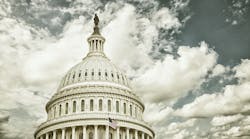Trump’s Pull Out from Paris Climate Agreement Spurs New Commitments from States, Cities, Industry and Academia
Donald Trump’s June 1 announcement that the United States will pull out of the Paris Climate Agreement sparked a wave of defiance by America’s politicians, industry leaders and academia. Begging the question, was it ever necessary for the federal government to impose costly regulations on industry, like those inherit in President Obama’s Clean Power Plan, when the population overwhelmingly expects a cleaner world from industry, state governments and municipalities? Apparently not.
As is stands, 29 states, the District of Columbia and the territory of Puerto Rico have established renewable portfolio standards (RPS) in place. There are eight additional states that have set renewable energy goals. Add to this the growing number of governors who’ve pledged to uphold the Paris targets.
Shortly after Trump’s announcement, the Governors of California, New York and Washington announced they had formed the U.S. Climate Alliance committed to upholding the objectives set by the Paris agreement. Since then, the governors in nine additional states have joined the alliance. There are also nine states and the District of Columbia who have expressed their support for the alliance. According to an EIA 2014 report assessing carbon emissions in the United States, the states making up the alliance and supporting the alliance goals account for nearly 40% of U.S. carbon emissions annually.
Along with state standards and newly formed alliances, the countries mayors have stepped into the limelight to support meeting the Paris Agreement’s objectives. The Mayor’s National Climate Action Agenda (MNCAA), also known as the "Climate Mayors," formed in June 2015, have tripled in membership over the past few months. In a news release on June 1, the MNCAA announced it had 323 U.S. mayors representing 62 million Americans planning to uphold commitments to the Paris Agreement.
Voluntary Programs
Further, supporting the concept that industry and local governments can make a difference, the U.S. Environmental Protection Agency (EPA) started the Green Power Partnership back in 2001. The overall goal was to increase the use of renewable electricity. It’s a voluntary program that has grown to more than 1400 members including some of the largest businesses, cities and universities in the country. As part of the program, the EPA publishes the National Top 100 list featuring the companies that have the highest annual green power usage.
The list includes a Who’s Who of industry titans including major city governments. The 2017 list ranks Intel Corp. first with 3.4 million MWh and Microsoft second with 3.3 million MWh of annual contract power purchases. Following these companies are Google Inc., Kohl’s Department Stores, Apple Inc., Cisco Systems, the City of Houston, Starbucks, Wal Mart and the U.S. Department of Energy. The total usage by all 100 entities on the list was 34 million MWh in 2016. To put that total in perspective, the largest nuclear power plant in the United States, the Palo Verde facility in Arizona, generated about the same amount of power in 2015 – nearly 33 million MWh.
On June 13, in the wake of President Trump’s withdrawing the U.S. from the Paris Agreement, Apple Inc. issued a ‘green bond’ that will mature in 2027. The value of the green bond is estimated at $1bn and is earmarked for renewable energy, energy efficiency improvements and the use of greener materials in its products.
Customers want clean energy and industry wants to create it and deliver it. It’s big business. According to a 2016 report by the Frankfurt School, the United Nations Environment Program and Bloomberg New Energy Finance, global investment in new renewable energy projects topped $285 billion in 2015 – the U.S. contribution was estimated at $44.1 billion.
The outcry and defiance shared by so many leaders across all spectrums after the pull-out proved clearly why federal regulation may never have been the optimum course. Customer demand and expectations were already driving decisions by state governments, city mayors and industry CEO’s.
With all this commitment to honor the Paris Agreement by non-federal entities it’ll be most interesting to see if they can deliver a cleaner future without the burden of costly federal regulations. Renewable energy is big money and customers are lining up to buy it.


